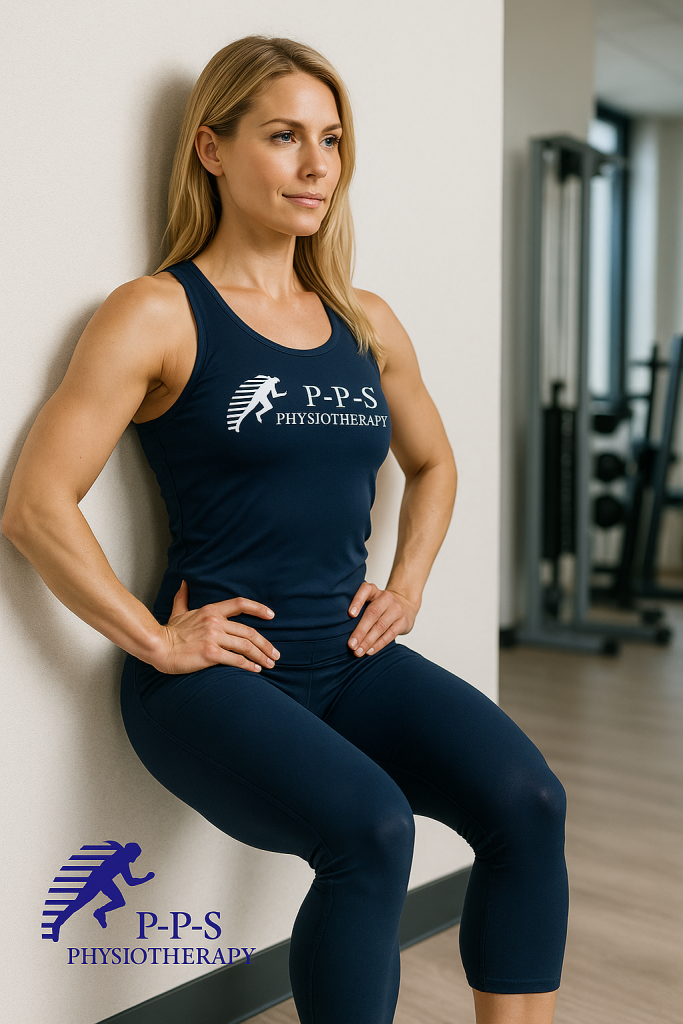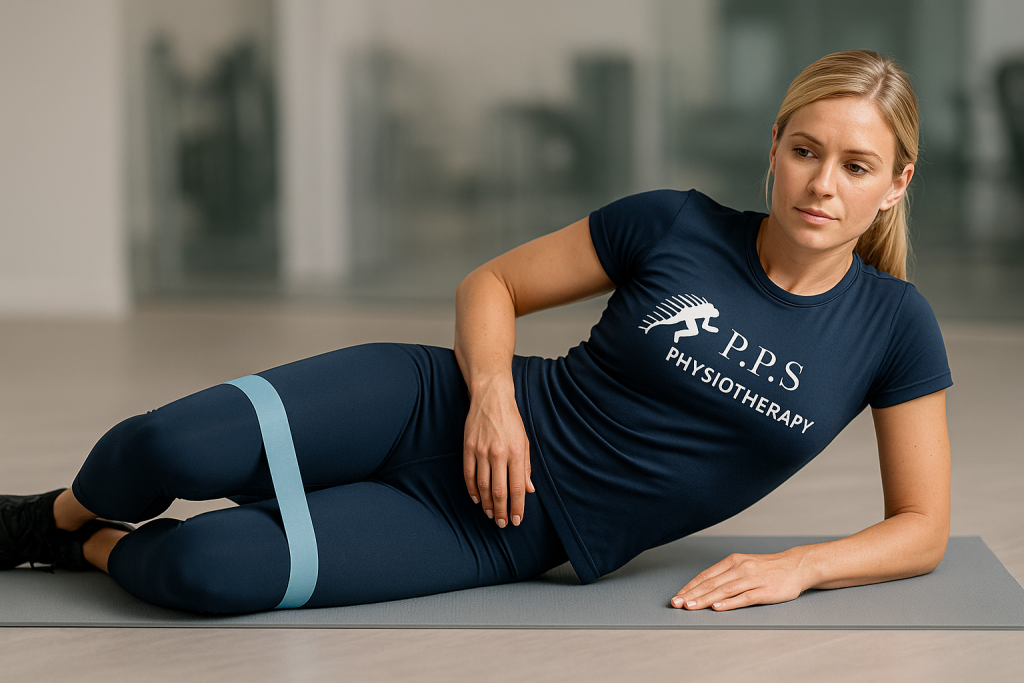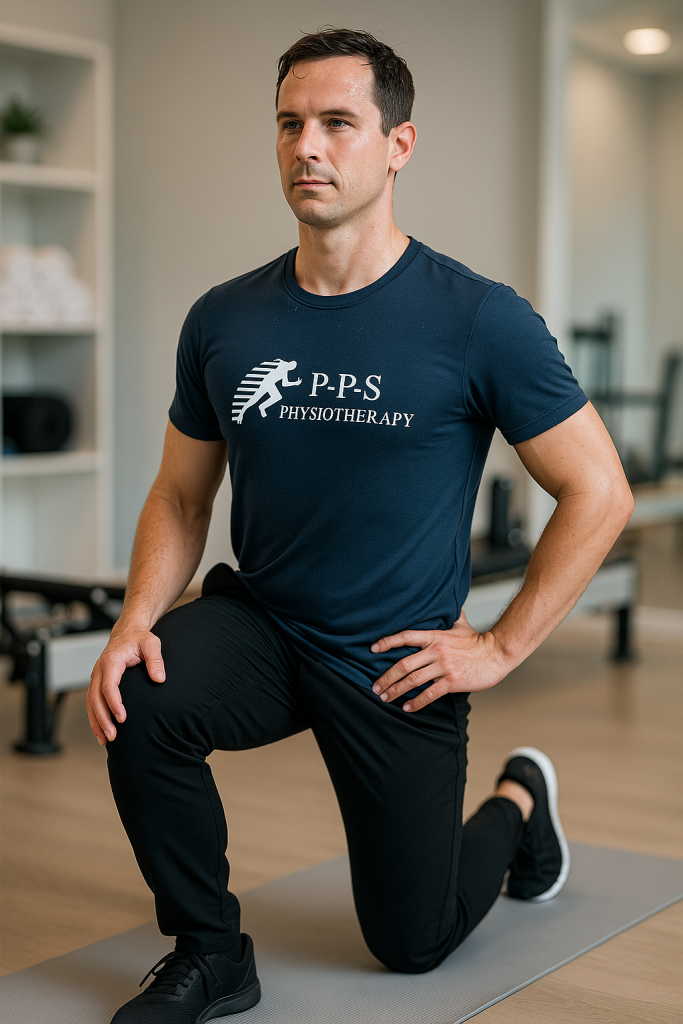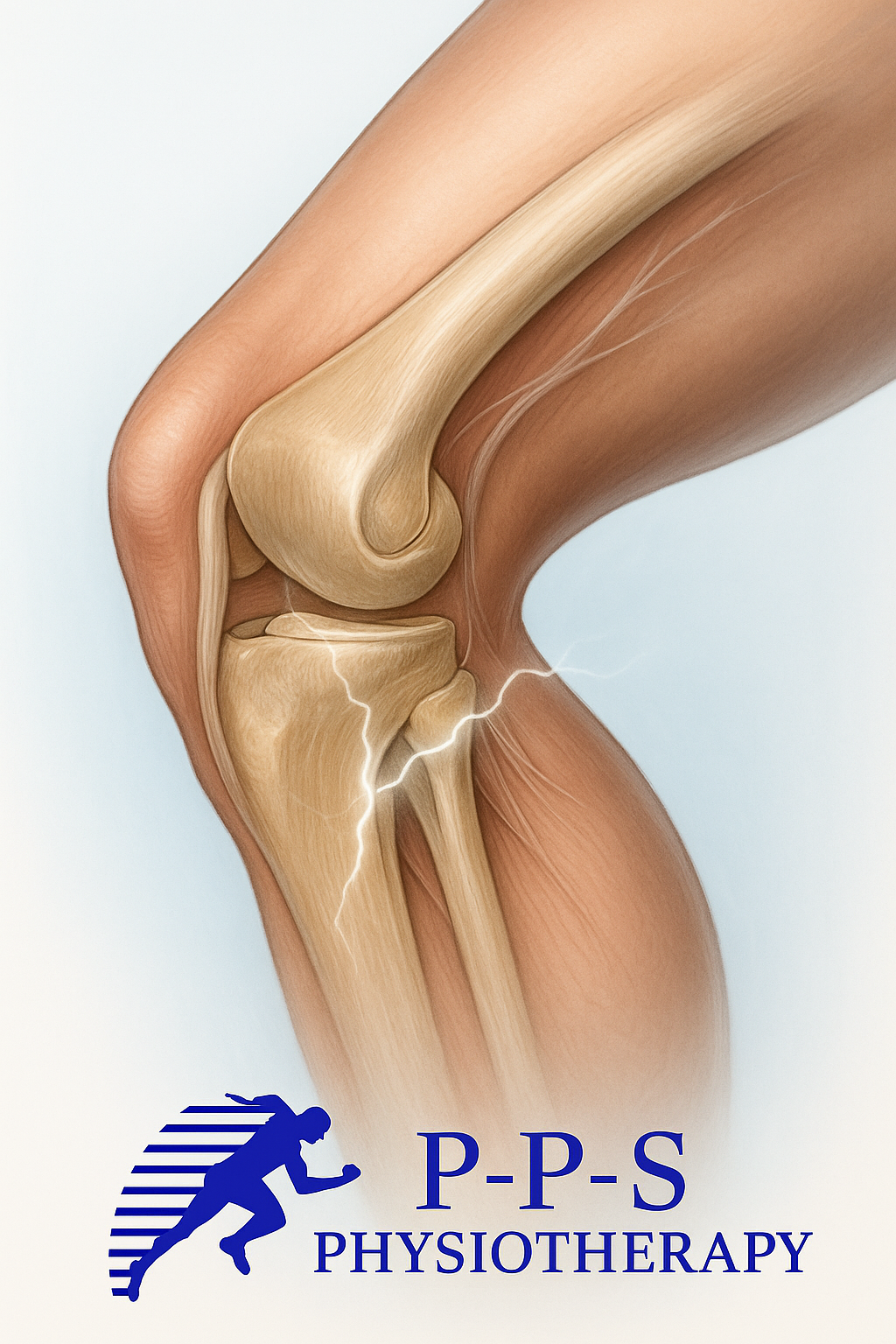Why Does My Knee Crack When I Bend It?
Whether you’re squatting down to pick something up, rising from a chair, or walking up stairs, you may have noticed your knee making a cracking, popping, or clicking sound. For many people, this is a source of concern. Is it normal? Is it a sign of arthritis or something more serious? At PPS Physiotherapy in Kellyville and Carlingford, we frequently get asked: “Why does my knee crack when I bend it?”
In this blog, we explain what causes knees to crack, when it’s harmless, and when it might be a sign of something requiring treatment. We also explore what you can do to relieve knee discomfort and how physiotherapy can help.
Table of Contents
- Why Does My Knee Crack When I Bend It – Explained
- Common Causes of Knee Cracking
- When Is Knee Cracking Normal?
- Should I Worry If My Knee Cracks When I Bend It?
- Common Conditions Linked to Knee Noises
- How a Physiotherapist Can Help
- Exercises to Relieve Knee Cracking
- Lifestyle and Preventative Tips
- Why Choose PPS Physiotherapy Kellyville or Carlingford?
- Book an Appointment
- Frequently Asked Questions
1. Why Does My Knee Crack When I Bend It – Explained
Knee cracking, medically known as crepitus, refers to the sounds your knee makes during movement. These can include:
- Cracking
- Popping
- Clicking
- Grinding
If you’ve ever asked yourself, “Why does my knee crack when I bend it?” you’re not alone. Many healthy individuals experience this sound during everyday activities.
2. Why Does My Knee Crack? Common Causes Explained
2.1 Gas Bubbles
Just like when you crack your knuckles, small gas bubbles in the synovial fluid of the knee can form and pop. This is completely normal and painless.
2.2 Ligament or Tendon Movement
Sometimes, a tendon or ligament may snap slightly over a bony structure during movement. This can produce a popping sound.
2.3 Patellofemoral Tracking
If your kneecap isn’t gliding smoothly in its groove, it may cause popping or grinding due to imbalanced muscles.
2.4 Cartilage Wear
Degeneration of cartilage (as in osteoarthritis) can cause a rough surface, producing a grinding or crackling noise.
2.5 Meniscus Tears
The meniscus cushions the knee. When torn, it may create clicking or mechanical blocking.
3. Is It Normal If My Knee Cracks When I Bend It?
Knee cracking is generally considered normal if
- The knee is not accompanied with pain or swelling
- Occurs intermittently
- No recent injury
- Full movement and function
4. Should I Worry If My Knee Cracks When I Bend It?
Seek assessment from a physiotherapist if your knee cracking is:
- Painful or causes discomfort
- You notice swelling, stiffness, instability
- The pain seems to be getting progressively worse
- The pain follows a traumatic injury
Learn more from PubMed or HealthDirect Australia
5. Conditions That Cause Your Knee to Crack When You Bend It
- Patellofemoral Pain Syndrome: Poor kneecap tracking, common in runners
- Chondromalacia Patella: Softening of cartilage under the kneecap
- Osteoarthritis: Age-related cartilage wear
- Meniscal Injury: Clicking and catching from meniscus tears
- Tendonitis: Snapping sensations due to irritated tendons
6. How a Physiotherapist Can Help
At PPS Physiotherapy, we offer tailored, evidence-based care in Kellyville and Carlingford:
- Biomechanical assessment
- Strength and flexibility testing
- Manual therapy and mobilisation
- Exercise prescription
- Load management and education
7. Exercises to Help When Your Knee Cracks as You Bend It
7.1 Quadriceps Strengthening
🏋️♂️ Wall Sit for Quadriceps Strengthening
Wall sits are one of the simplest and most effective ways to strengthen the quadriceps and support knee stability. Here’s how to do them properly:
✅ How to Perform a Wall Sit
-
Stand with your back flat against a wall, feet shoulder-width apart and ~60–70 cm away.
-
Slowly slide down the wall until your knees are at a 90-degree angle.
-
Keep knees over ankles, back flat, and core engaged.
-
Hold for 15–30 seconds to start. Build up to 60 seconds. Perform 2–3 sets.
🧠 Coaching Cues
-
“Back stays flat against the wall.”
-
“Knees aligned with toes — don’t collapse inward.”
-
“Brace your core and breathe normally.”
❌ Common Mistakes
-
Letting knees push past toes
-
Arching the lower back
-
Holding your breath
🔁 Progressions
-
Squeeze a small ball between the knees
-
Add light dumbbells
-
Try single-leg holds (advanced only)
📌 Clinical Relevance to Knee Cracking – Wall Sit Exercise
The wall sit is an isometric quadriceps strengthening exercise that targets the vastus medialis oblique (VMO), rectus femoris, and gluteal stabilisers. These muscles play a critical role in maintaining patellofemoral joint alignment and controlling knee tracking during functional movements such as squatting, walking, and stair climbing.
In patients who report knee cracking (crepitus) when bending, key contributing factors often include:
-
Quadriceps weakness, especially the VMO
-
Poor neuromuscular control during knee flexion
-
Delayed or uncoordinated quadriceps activation
-
Altered patellofemoral mechanics under load
Wall sits help address these issues by:
-
Increasing quadriceps endurance and strength without dynamic joint loading
-
Promoting VMO activation in a pain-free range
-
Enhancing lower limb stability in a controlled, weight-bearing position
-
Reducing anterior knee shear forces often seen in open-chain knee extension exercises
Because the exercise avoids rapid joint movement, it’s well-tolerated in patients with crepitus and can be safely progressed as strength and tolerance improve.
This makes the wall sit a valuable addition to any rehab program targeting knee noise, patellofemoral pain, or general lower limb neuromuscular retraining.

7.2 Gluteal Activation
🏋️♂️Banded Clamshell Exercise – Glute Activation for Hip & Knee Stability
Purpose:
The clamshell exercise targets the gluteus medius and minimus, which are essential for hip stability, pelvic control, and knee alignment. This movement is commonly prescribed in rehabilitation for knee pain, hip dysfunction, or lower back issues, and is especially effective when performed with a resistance band.
✅ How to Perform the Banded Clamshell
-
Setup:
-
Lie on your side on a comfortable surface (e.g., yoga mat).
-
Bend both knees to approximately 45 degrees and stack your hips and shoulders vertically.
-
Loop a resistance band just above your knees (distal quadriceps region).
-
Rest your head on your lower arm for support, with your top hand placed in front of your torso for balance.
-
-
Execution:
-
Keep your feet together as you lift your top knee upward, creating tension in the resistance band.
-
Avoid rolling your hips backward — isolate the movement to the hip joint.
-
Pause briefly at the top with full glute engagement, then slowly lower the knee back to the starting position.
-
Perform 2–3 sets of 10–15 reps per side, or as directed by your physiotherapist.
-
🧠 Coaching Cues:
-
“Keep your hips stacked — imagine a cup of water balanced on your top hip.”
-
“Lift with your glutes, not your back.”
-
“Control both the lift and the return — no snapping back down.”
-
“Exhale as you open the knees, inhale to return.”
❌ Common Mistakes to Avoid:
-
Letting the pelvis roll back during the lift
-
Flaring the ribs or arching the lower back
-
Lifting too high and losing glute activation
-
Losing tension in the resistance band
🔁 Progressions & Variations:
-
Heavier resistance band for added load
-
Side plank clamshell (for advanced hip/core stability)
-
Wall-supported clamshell to reduce trunk compensation
-
Feet elevated on a step or cushion to increase hip abduction angle
📌 Clinical Relevance to Knee Cracking – Banded Clamshell Exercise
The banded clamshell is a foundational exercise for activating the gluteus medius and minimus, key stabilisers of the hip and pelvis. Weakness or delayed activation of these muscles can lead to hip internal rotation and femoral adduction, which may alter the alignment of the patellofemoral joint and contribute to:
-
Poor patellar tracking
-
Lateral knee loading
-
Knee valgus mechanics during movement
These factors can increase stress on the lateral retinaculum and cartilage surfaces, potentially leading to the audible cracking or popping sensation often reported when bending, squatting, or climbing stairs.
By strengthening the gluteal muscles with targeted activation through the clamshell, patients can:
-
Improve pelvic control
-
Reduce femoral internal rotation
-
Enhance knee alignment during dynamic tasks
-
Support long-term resolution of patellofemoral pain and reduce mechanical joint noise
This makes the clamshell particularly valuable in addressing the proximal contributors to knee dysfunction, and a common inclusion in evidence-based rehab for knee crepitus and patellofemoral tracking disorders.

7.3 Stretching
🏋️♂️Kneeling Hip Flexor Stretch – Reducing Anterior Hip Tightness to Support Knee Health
Purpose:
This stretch targets the hip flexors, particularly the iliopsoas and rectus femoris muscles. Tightness in these muscles can contribute to altered lower limb mechanics, excessive anterior pelvic tilt, and poor lumbopelvic control — all of which may place increased load on the patellofemoral joint and contribute to knee cracking or discomfort during movement.
✅ How to Perform the Kneeling Hip Flexor Stretch
-
Start Position:
-
Kneel on a soft surface or yoga mat.
-
Place your left knee on the ground, and bring your right foot forward, flat on the floor, forming a 90-degree angle at the front knee.
-
Ensure your hips are square and your torso is upright.
-
-
Execution:
-
Gently shift your hips forward while maintaining a neutral spine.
-
You should feel a stretch through the front of the left hip and thigh.
-
Engage your core slightly to avoid arching your lower back.
-
Hold for 30 seconds, repeat 2–3 times, then switch sides.
-
🧠 Coaching Cues
-
“Tuck your pelvis under slightly — think of bringing your tailbone toward your front heel.”
-
“Keep your torso tall and ribs stacked over your hips.”
-
“Avoid over-arching your lower back — this is about the hip, not the spine.”
❌ Common Mistakes to Avoid
-
Leaning too far forward or arching the back excessively
-
Letting the front knee go beyond the toes
-
Rotating the pelvis or flaring the ribs
-
Rushing the stretch without engaging the glutes or core
📌 Clinical Relevance to Knee Cracking
-
Tight hip flexors can contribute to anterior pelvic tilt and disrupt normal patellofemoral tracking, potentially increasing joint stress.
-
Improving hip extension mobility supports optimal lower limb alignment, reducing compensatory patterns that lead to audible knee crepitus during squatting, lunging, or walking.
-
This stretch is especially useful when combined with glute activation exercises like clamshells or bridges to promote muscle balance.
🔁 Progressions & Modifications
-
-
Add an overhead reach with the same-side arm to increase the stretch
-
Perform next to a mirror or with therapist supervision to check posture
-
Advance to standing lunge hip flexor stretch as tolerated
-

Always consult your physiotherapist before beginning new exercises.
8. Lifestyle and Preventative Tips
- Maintain healthy weight
- Use supportive footwear
- Avoid prolonged sitting with bent knees
- Warm up properly
- Strengthen supporting muscles
- Correct posture and movement patterns
9. Why Choose PPS Physiotherapy Kellyville or Carlingford?
PPS Physiotherapy is your local knee pain practitioners, trusted by the Hills District and Carlingford communities. Here’s why people choose us:
- 15+ years of experience
- Evidence-based, hands-on care
- Personalised rehab programs
- On-site gym facilities
- GP communication and referrals
- HICAPS & Medicare EasyClaim
10. Book an Appointment
Don’t let knee cracking slow you down. Book a consultation with PPS Physiotherapy:
11. Frequently Asked Questions
Is knee cracking always a sign of damage?
No, many cases are harmless and caused by gas bubbles or minor tendon movement.
Should I see a physiotherapist for knee popping?
Yes, especially if it’s painful or follows injury.
Can physiotherapy help noisy knees?
Yes, physio improves biomechanics and reduces joint stress.

